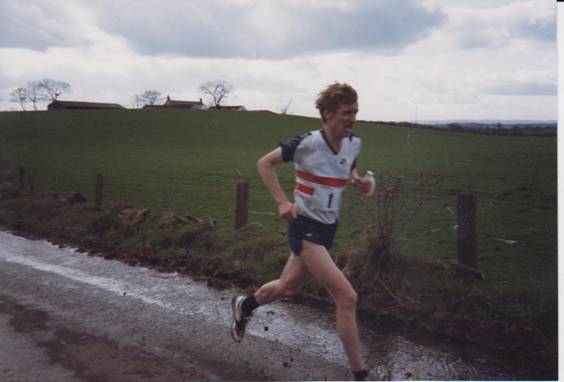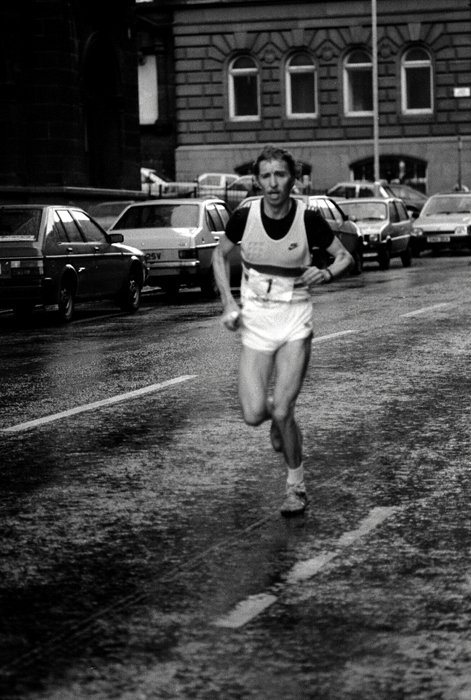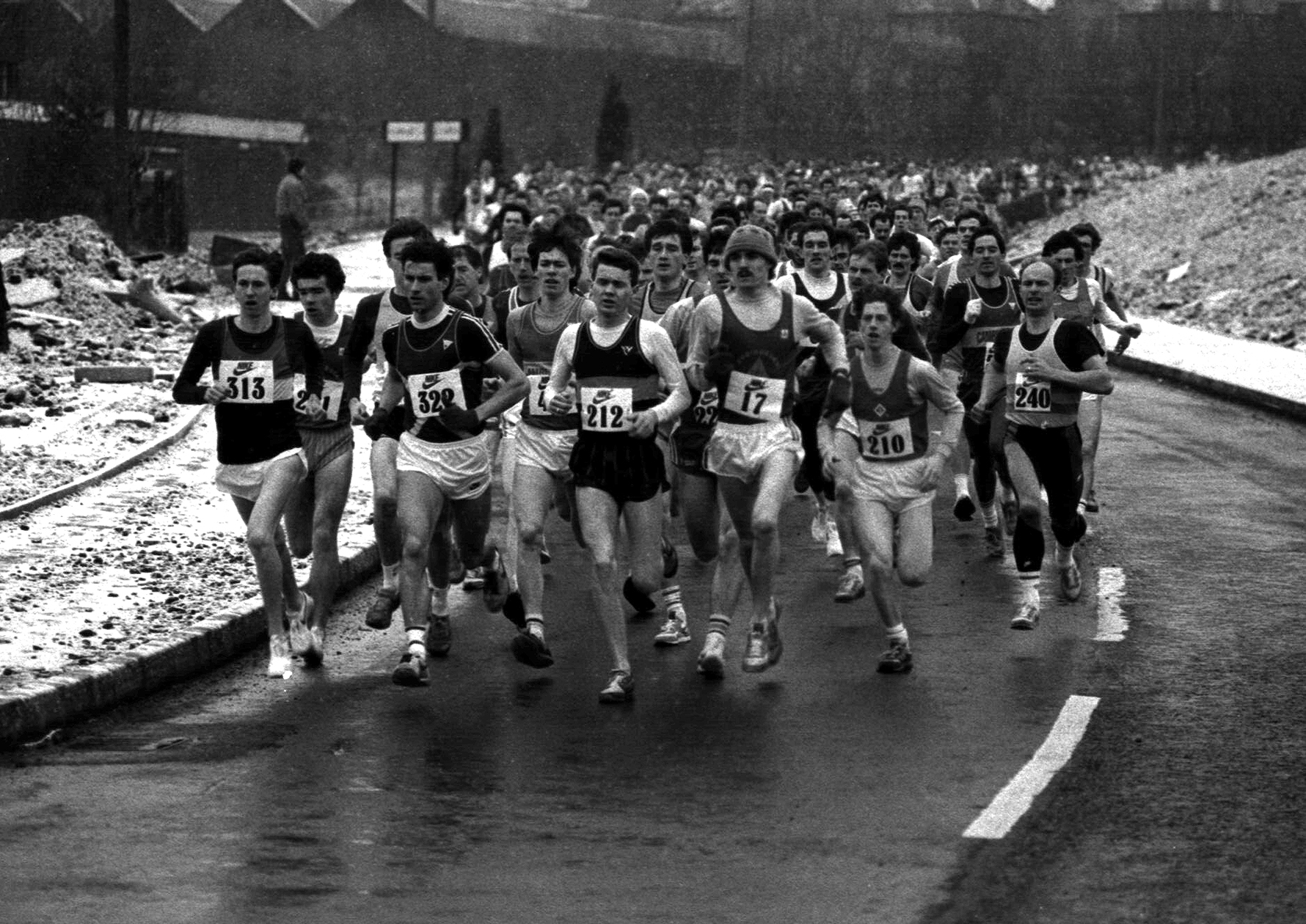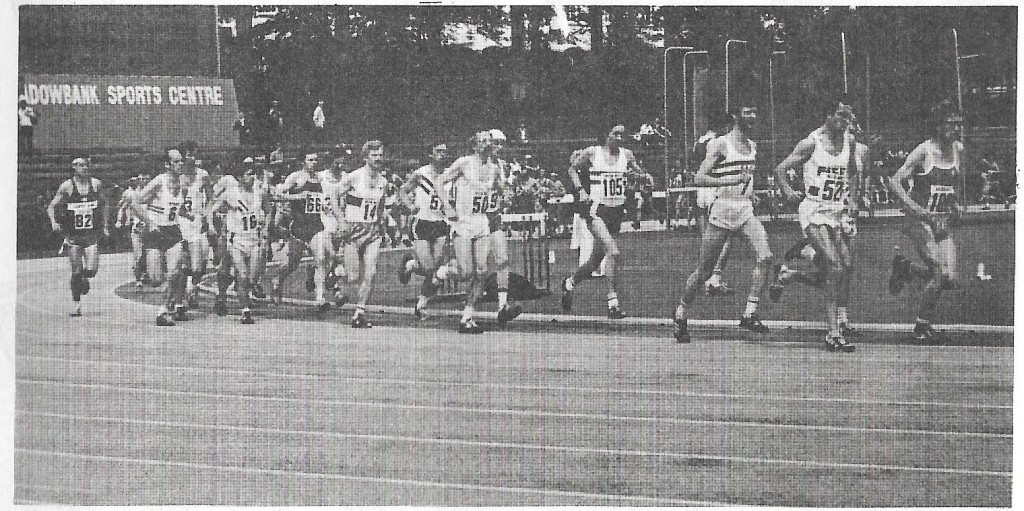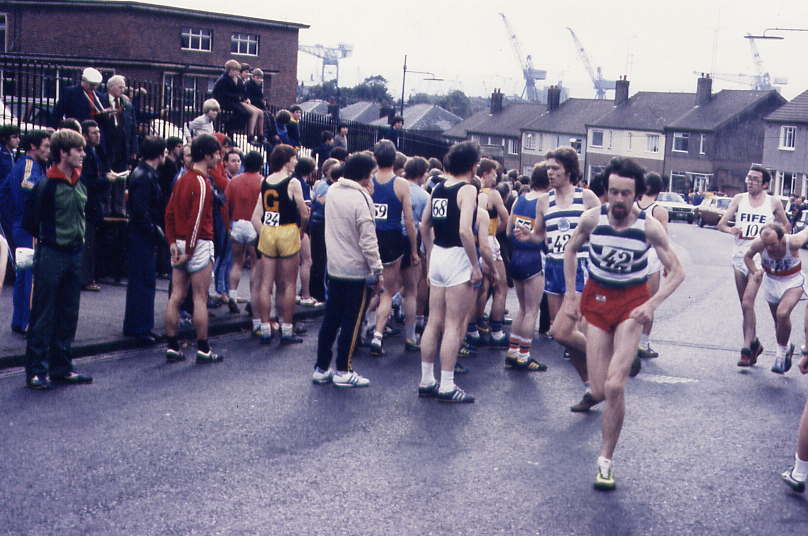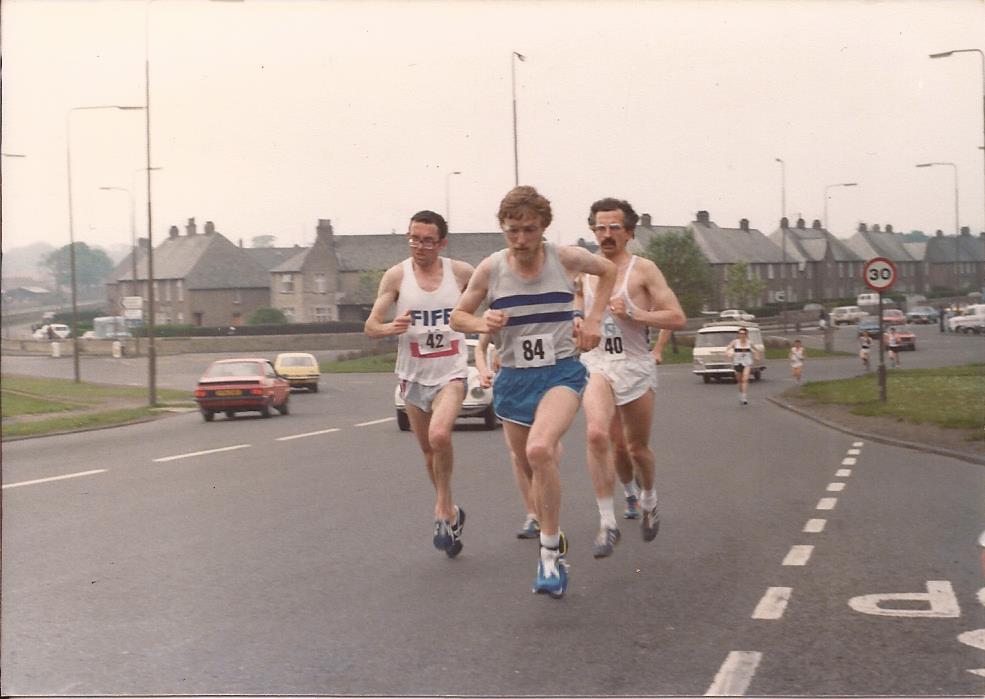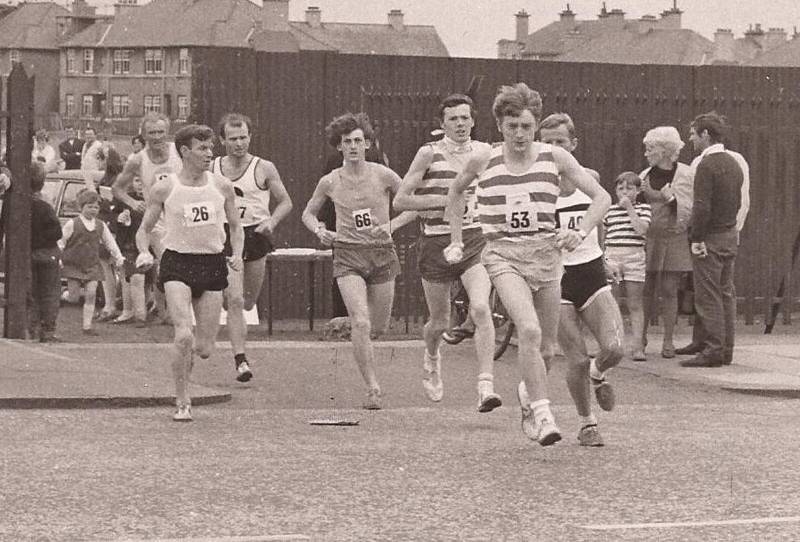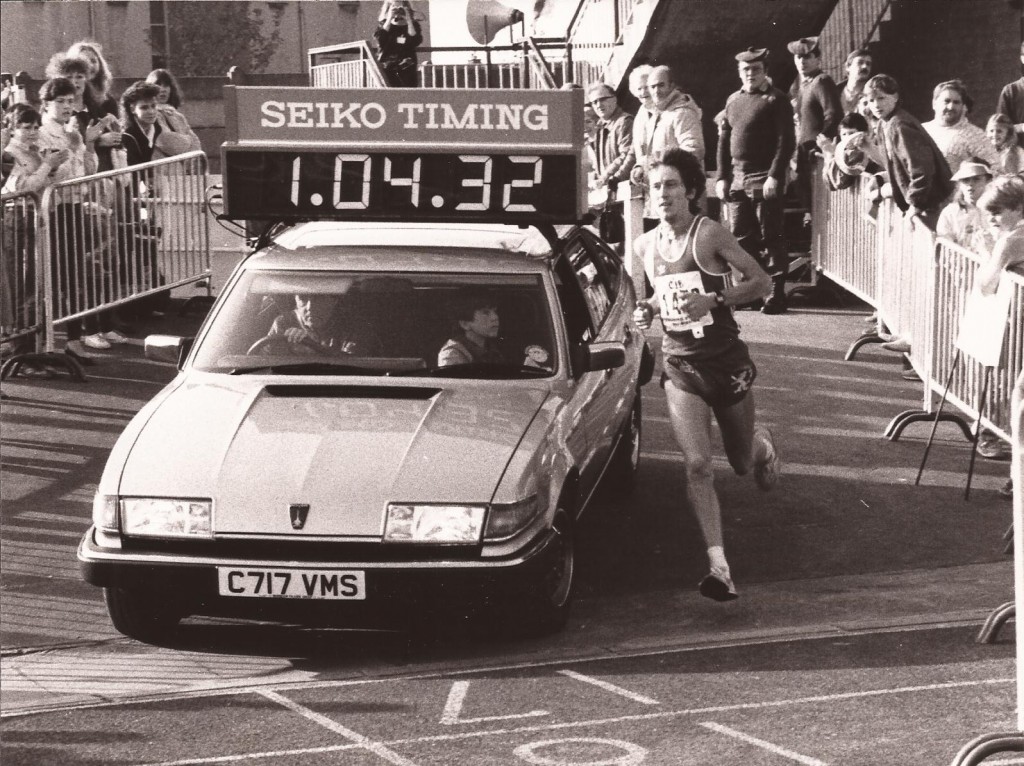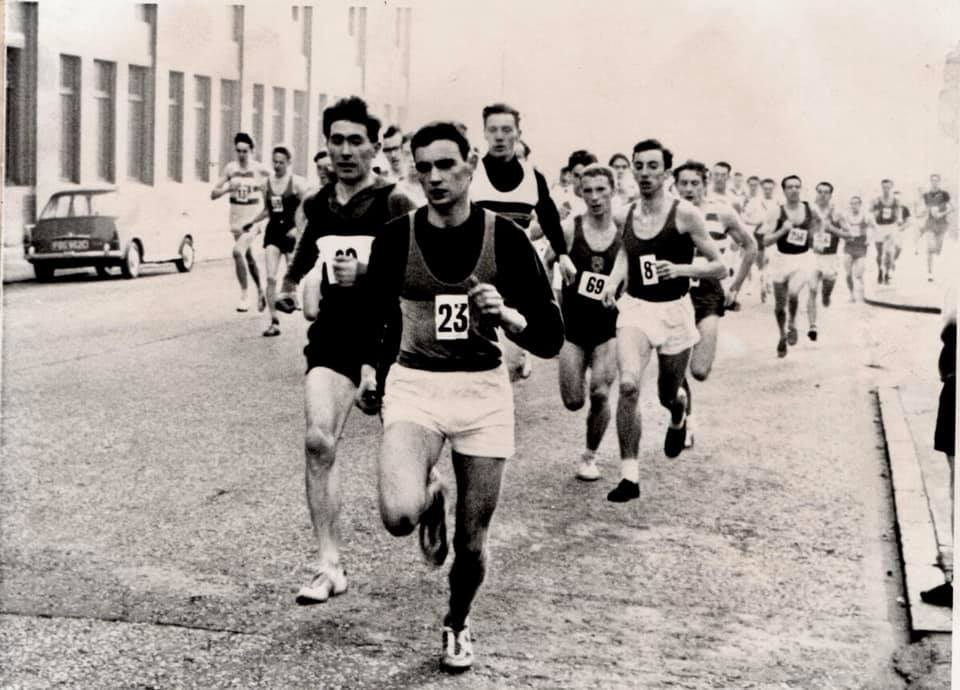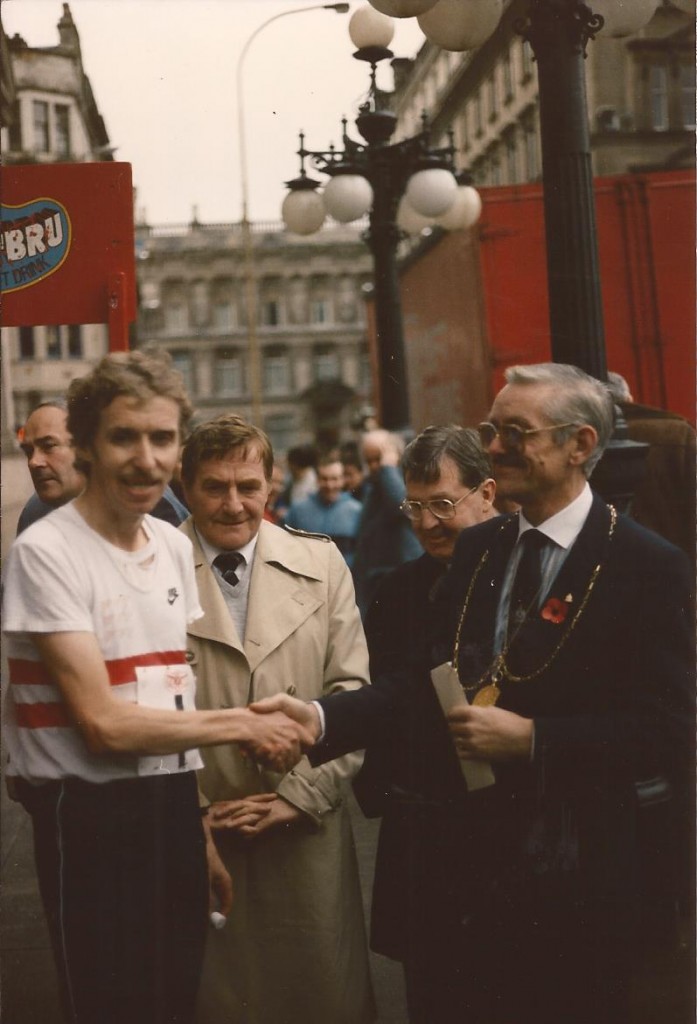Back in the 1970s, nearly every road-running Scot was male. [SAAA, SCCU and SWCCU rules did not allow men and women to race together. The only time they might see each other racing was during the SAAA/SWAAA Track and Field Championships – and then only in separate events.] After the advent of City Marathons (starting with Aberdeen in September 1979) could take part in the same races. (The developing Veteran scene was also important in allowing men and women to compete together on the roads.)
Any road-racing specialist would train on a variety of surfaces – track, grass, trails and hills as well as tarmac. In addition, he would almost certainly race on track and cross-country as well as road. Nevertheless, the Road Running Year provided a calendar of events, which allowed the athlete to increase fitness gradually, before peaking for major races like the Tom Scott 10, Scottish Marathon Championship, the Two Bridges 36 and the Edinburgh to Glasgow Road Relay.
The very top road runners had the organisation of their year down to T. It might be of course that that was the difference between the real top men and the ‘nearly top men’.
One of our best endurance runners who had success on all surfaces – track and country but especially road – at all age levels is Colin Youngson and we asked him to discuss and explain his racing year and how it was planned.
For example, his best year was 1975 when, representing Edinburgh Southern Harriers, he was training 70 or 80 miles per week and did not suffer injury. No fewer than 24 races were completed that year, and he did peak successfully for the Scottish Marathon and Edinburgh to Glasgow, as well as producing decent performances on cross-country, middle-distance track and (without extra training) the Two Bridges. At the end of such a busy season, he was delighted to be presented with the SAAA Donald McNab Robertson Trophy (for Best Scottish Road Runner of the Year).
Colin finishing the last stage of the 1986 E to G, which his team Aberdeen AAC won.
What follows is a list of his 1974-1975 races, with road races in bold, and his comments on the season. He takes over the story:
“The Road Running Year may be said to start (or in the case of marathons, end) around 1st October. In June 1974, I returned to Scotland after ten months teaching English as a foreign language in Sweden. There, I was slowly improving as a runner, despite having to do all training on my own in a flat part of the country. The opposition, apart from a few tough athletes, was nothing like as strong as in Scotland, let alone Finland and England. My marathon personal best was 2.22.28.
Having reached my home city of Aberdeen in early June, I raced the Scottish Marathon on the 22nd, finishing a tired third (2.21.36). By mid-August, I had moved to hilly Edinburgh, started teaching English at Craigmount High School, had become a member of Edinburgh Southern Harriers, and proper 70 to 80 miles a week training had resumed, including Sunday Runs (16 to 25 miles), hill reps and long and short interval work with a number of good runners. How would this fresh regime affect my speed and stamina?
On 25th August 1974, in a slow time, I won a very windy Scottish 10 Miles Track title at Meadowbank. On September 28th came the first road running fixture of the Winter season: the ESH Fernieside Relays. Our team won, I posted the fastest time – and it was the only occasion that my brilliant young clubmate Allister Hutton let me finish a few seconds in front of him.
5th October: We finished second to Edinburgh Athletic Club in the McAndrew Road Relay in Glasgow. I was third-fastest behind Andy McKean and Gareth Bryan Jones.
19th October: Kingsway Relays, Dundee. ESH first team. I was third-fastest behind Alister Blamire and Craig Douglas.
26/10/74: Harlow Marathon, Essex. 8th. Although I chipped a few seconds off my pb with 2.21.06, I was disappointed not to get closer to the 2.20 mark.
16/11/74: Delighted to come home first (outsprinting Willie Day due to the uphill finish) on Stage One of the Edinburgh to Glasgow Road Relay. ESH won this legendary race after a very close battle with EAC.
23/11/74: ESH third in the Scottish XC Relay. I took over third and finished there but felt a bit stale.
7/12/74: A poor run on a bumpy, muddy course during the SCCU v SU v Northern Ireland contest.
There was absolutely no doubt that running on the road suited me best. What would 1975 bring? Could this new training regime allow me to build up for important races and produce new pbs for 10.000m, 10 miles and, especially, the Scottish Marathon Championship?
Nigel Barge Road Race, 1984
There followed four weeks hard training, totalling: 71 miles, 80, 100 and 80, leading up to the first race of 1975.
4th January – Nigel Barge Memorial 4 and a half mile race, Glasgow – 4th.
12th January – East District Cross Country League (final race), Livingston. 6th. ESH won team title.
18th January – East District CC Championships, Fernieside, Edinburgh. 4th. ESH first team.
5th February – Scottish National CC Championships, Coatbridge. 19th. ESH second team.
1st March – Edinburgh University 10 mile road race. Third. ESH first team.
5th April. After release from hospital (for a minor face operation) a poor run in the Tom Scott 10. Only 20th, but got fit again surprisingly fast.
26th April – AAA National 12-Stage Road Relay, Sutton Coldfield. ESH second team against the cream of English clubs. I was third-fastest on the short stage – a hilly 3 miles 100 yards in 14.16.
3rd May – Scottish Athletics League, Division One, Meadowbank, Edinburgh. 5000m (B race): 1st in 14.32.
10th May – SAAA Ten Mile Track Championship, Carluke. 2nd in a lifetime best 49.00.8.
17th May – Drymen to Scotstoun 15 mile road race (Glasgow Highland Games). 1st.
.31st May – East District 10,000m at Meadowbank. Second in a lifetime best 29.33.4. This very hard run led to selection for Scotland v Iceland 10,000m.
8th June – Pye Gold Cup 5000m, Meadowbank. 1st in 14.37.6 (despite fall on first lap).
28th June – Scottish Marathon Championship, Meadowbank. Won in 2.16.50 (Championship Best Performance). Best race ever. Led to selection for a GB two-man team in an International Marathon.
29th June – ESH (unsuccessful) attempt on 100 x One Mile world track record, Meadowbank. 4.29 mile, the day after the marathon. (A long warm-up was essential.)
Scottish Marathon leaving Meadowbank Stadium, 1981. Colin Youngson leads (and won).
5th July – Forres Highland Games. Ten Miles. CY 1st.
19th August – Scotland v Iceland Athletics match in Reykjavik. 10,000m: second to team-mate Allister Hutton.
23rd August – Two Bridges Race, Dunfermline. 36 miles 158 yards. Second in 3.29.44, almost three minutes behind Cavin Woodward (World number one ultra-marathon runner that year.) This run probably clinched the Robertson Trophy award.
Friday 12th September – 6th Internationale Berchem Marathon, Antwerp, Belgium. Second, 17 seconds behind Danny McDaid (Eire), with GB team-mate Max Coleby just 9 seconds further back. We beat the Irish on countback as well as several Continental pairings.
McAndrew Relay changeover, 1979,
4th October – McAndrew Road Relay, Scotstoun, Glasgow. 6th fastest. ESH won.
12th October – Coatbridge 5: fifth in a classy field.
25th October – Allan Scally Road Relay, Baillieston, Glasgow. 6th fastest. ESH won in a new course record 90.45.
8th November – Glasgow University 5 miles road race. 3rd in a PB 24.57.
15th November – Edinburgh to Glasgow Road Relay. 1st ESH 3.33.32 (new course record). I set a new Stage One record of 26.00. Second-best ever run.
29th November – International Cross-Country, Gateshead Riverside Bowl. Scotland (1st team) v England v Rest of World v Gateshead Harriers. Reality check! Horrible circuit with vicious little anaerobic hills. Ended up 27th ex 32, in front of two Scottish team-mates.
(N.B. After such an outstanding year, Colin trained too hard (100 miles per week), got sciatica, had to reduce mileage and was never quite as good again, although between 1977 and 1985 he ran eight more sub 2.20 marathons and had a long, often successful career as a Veteran/Master up to the age of 70.)
Comments on 1975
Important training ingredients included: long fairly hard Sunday runs; speedwork (short and long repetitions plus hill sessions, short road relays, 5000m races); easier, recovery training runs; track 10,000m events (there very were few road 10ks back then); cross-country; ten and 15 mile road races. This produced fitness for a fast, competitive marathon and the stamina to complete 36 miles steadily before finishing strongly.”
What other possible races featured in the calendar?
(The Scottish Marathon Club provided an excellent fixture list.)
(Originally 13.6 miles but this was changed to 14.1 miles in 1983.)
| Month | Race | Distance | Month | Race | Distance | |
|---|---|---|---|---|---|---|
| January 1st | Morpeth to Newcastle | originally 13.6 now14.1 | March | Balloch – Clydebank | 12 | |
| District CC Championships | 6 miles | Clydesdale Harriers Road Race | 5+ | |||
| Springburn Cup | 5+ | Fife AC Race | ||||
| End of January | Scottish Inter-Counties CC Championships | Scottish 6 Stage Relay | 6 or 3 miles. |
| Month | Race | Distance | Venue | Month | Race | Distance | |
|---|---|---|---|---|---|---|---|
| April | ESH | Club 10 | Edinburgh | May | District Champs | 10 | 000.. |
| Renfrewshire | 10 | Greenock | Edinburgh to North Berwick | 21.8 miles. | |||
| Glen Nevis Race | 10 | Fort William | Gourock HG | 14 miles | |||
| Clydebank to Helensburgh | 16 miles | Strathkelvin Half Marathon | 13.1 |
| Month | Race | Distance | Month | Race | Distance |
|---|---|---|---|---|---|
| June | Bearsden Highland Games | 10 | July | .Perth to Dundee | 22 |
| Lesmahagow HG | 13 | Carluke HG | 10 Miles |
| Month | Race | Distance | Month | Race | Distance |
|---|---|---|---|---|---|
| August | Cambuslang Harriers | 10 Miles | September | Shotts Highland Games | 14 |
| Strathallan HG | 14 | Dunblane Highland Games | 14 | ||
| Bute Highland Games | 10 Miles. 18 miles in the 60s lowered to 10 | Livingston road race | |||
| Cowal Highland Games | ESH road relay |
Then it was back to the winter cycle of
October: McAndrew Relay
Mid-October: the Kingsway road relay in Dundee
End of October, the Scottish CC Relays.
Early November, the District CC Relays.
In format
Early December, County CC Champs.
SCCU v Scottish Universities.
East Kilbride road races.
Queen’s Drive road race, Edinburgh.
The outline is clear and then you can see the races that Colin added in to trim and tweak his progress through the year. For instance in May he added the tough Drymen to Scotstoun race instead of the quicker Gourock HG 14 miles. At the end of May and the start of June he fitted in a 10,000m on the track followed by the even shorter and quicker 5000m on the track in the lead in to the fast-paced marathon. Without labouring the point too much, the season now is a bit different.
First, there is a proliferation of 10K road races. No one in the governing body is tasked with asking some of these organisers to alter the distance of their race to help the runners in their preparation for the major championships. Instead, the governing body dishes out permits to all who want them – or maybe they have completely stopped trying to control the flow of races by permits or by any other method.
Second, there does not seem to be any concern about races being dropped from the programme. For example, the Strathallan 20 became the Strathallan 14, then the Strathallan 10 before being dropped; other races such as the Dunky Wright 5K have just been dropped. No one has enquired of the organisers why these events have been dropped or offered to assist in their restoration. It is impossible to imagine such as Jimmy Scott or Dunky Wright not acting. The road racing scene seriously needs examining by the governing body.
The Scottish marathon championship is now run as part of a mass marathon – the last five have been enmeshed in the Inverness, London and Stirling marathons. These in no way resemble a marathon championship race. For two years it was not even run in Scotland. It is a proper Scottish championship and should be treated as such rather than as an add-on to a glorified fund raising exercise.
The last five championships have been run on 27th September 2015, 24/4/2016, 23/4/2017, 29/4/18 and 28/4/2019. How can any serious marathon runner build up to a peak for the very start of the season?
The once excellent Scottish endurance running organisation has been deprived of the proper stepping stones to success, as used by such as Colin, Donald Macgregor, Fergus Murray and all the other genuine national marathon heroes.
Alastair Macfarlane, a fine runner who became Scottish Marathon Champion in 1979 (beating Donald Macgregor and Colin Youngson) commented as follows on his own approach to ‘training races’ and peaking for important events.
“Thinking about the running calendar: Brian McAusland is right in suggesting that there was a bit of progression back in the day – but I suppose it was what you made it. I wonder if there was ever any planning on the part of the SCCU or SAAA and their female equivalents with regard to progression. I always tried to adhere to the principle of short, medium and long term targets – didn’t always succeed but that was the plan. And in the most successful part of my running career the long term target was a marathon.
I would aim to target no more than six or eight races per year in which I would aim to do well. These would include the Edinburgh to Glasgow Relay, the Balloch to Clydebank, the Clydebank to Helensburgh and the National 6 Stage Relay. Other races such as the District and National Cross Country Relays, the County Relays, the Glasgow University 5 miles, the Nigel Barge and the Springburn Cup were really used as glorified training runs. I would always try to run and compete well in them, and sometimes achieved that, but wouldn’t ease down my training. I would often be beaten by runners who wouldn’t normally beat me when I was at my best but was confident enough to realise that.
As I alluded to earlier, I wonder if the racing calendar in the seventies and eighties was progressive by accident or design and of course it was up to the individual to design their own fixture list. Nowadays I wonder how much if any planning goes into it. In Autumn the District and National Relays are still around and the National Short Course Cross Country has been added. This is a good start to the winter season along with the District Cross Country Championships but there are now far too many races available to runners. If an individual or organisation wishes to organise an event, Scottish Athletics will issue a permit without too many questions, providing safety requirements are met. This is because events are an income source and there is probably little consideration given to where events will fit into the competitive season.
Nowadays I coach a group of runners, mainly Masters who, after some effort, I have convinced should decide on targets and focus on certain events within a race programme, rather than treat every race with equal importance. However, my experience tells me that nowadays the huge majority of those taking part in our sport give little thought to race planning. Maybe it was always so?”
The Road Runner’s Year Part 1 Part 3 Part 4
